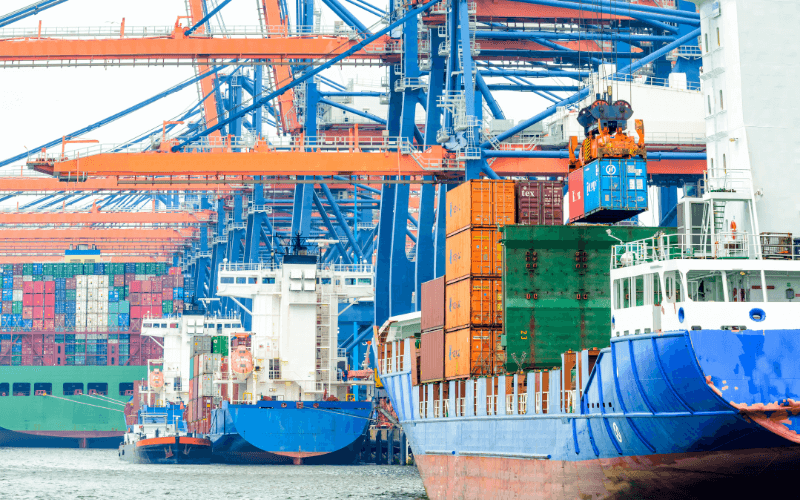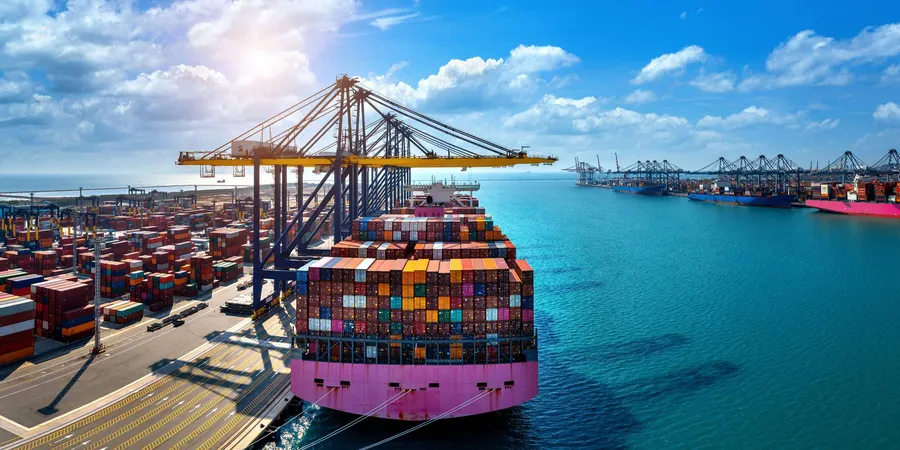What is “Shipped On Board” in Logistics?
For those in the shipping and freight industry, ‘shipped on board’ could be a familiar term. It means that specific goods have been received and loaded onboard the ship on the said date. Typically, shipped on board appears on all bills of lading.
It is a confirmation from the shipping company to the shipper or the party dispatching the goods that have been loaded onboard their ship. That sounds pretty straightforward, right?
Is it mandatory to show the shipped on board date on a bill of lading (BOL)?
Though it may not be mandatory, it helps to specify when the shipping line received the goods from the shipper. But the shipped on board date is quite important, especially when it comes to a letter of credit.
Letter of Credit
What is a letter of credit? In international trade, it is a financial guarantee from the buyer’s appointed bank to the seller-nominated bank for payment of goods dispatched by the seller to the buyer. This letter ensures that the bank issuing such a guarantee pays the seller in case the buyer defaults in making payment.
Business organizations that have to deal with new or one-time customers usually prefer transacting through a letter of credit. It is also called a documentary credit in some countries.
To understand the importance of the term shipped on board, let us take a quick look at how a letter of credit works.
- The buyer requests his bank to issue a letter of credit favoring the seller’s bank.
- The buyer-nominated bank issues the letter, usually backed by some kind of security or collateral from the buyer.
- The bank issuing the letter of credit, known as the issuing bank, assures the seller’s bank of payment by the buyer and a guarantee to pay in the event of default by the buyer.
- Sometimes the letter of credit may be coordinated between the buyer’s and seller’s banks through another international bank which is then known as the negotiating bank.
- Thus, the buyer and seller are now connected through the issuing bank and the seller’s bank.
- Goods are shipped by the seller according to the terms agreed with the buyer.
- The seller receives a bill of lading (BOL) once the goods are loaded on board the ship. The bill of lading will specify that the goods have been shipped on board.
- The seller hands over this bill of lading along with other shipping documents to his bank which will then pass it on to the issuing bank, requesting payment.
- Once the issuing bank is satisfied with the correctness of the bill of lading and other accompanying shipping documents, it informs the buyer who makes payment to the bank.
- The original shipping documents are released to the buyer for clearance and receipt of the goods when it arrives at the destination port.
- The issuing bank releases payment to the seller’s bank.
- As you can see here, shipped on board is an important notation on a bill of lading as far as a letter of credit is concerned. It confirms that goods have indeed been loaded and received onboard the ship.
Clean Vs Claused Bill of Lading
Banks that deal in letters of credit insist on clean bills of lading. A clean bill of lading is one that does not have any clauses attached to it. In other words, the goods are without any encumbrance, defects, or shortage. Along with this, all other documents, such as the invoice for the goods and related certificates, have to be accurate for the issuing bank to accept them.
A claused bill of lading, on the other hand, will have notations that highlight shortages or damages to the goods that were delivered to it by the shipper and loaded on board. It is also called a dirty or foul bill of lading. For a bank to accept the shipping documents as correct, such a claused bill of lading will not do.
That brings us to the question of shipping companies issuing bills of lading with some showing the notation shipped on board while others state ‘clean on board’. The latter is more specific and signifies that the goods were received in good condition without any clauses.
When a bill of lading does not show the shipped on board date on it, the normal practice is to take the bill of lading date as the shipped on board date. It will therefore be assumed that the goods were loaded on board the vessel on the date of issue of the bill of lading.
Bill of Lading Date Vs Shipped on Board Date
It is important that the bill of lading date and shipped on board dates are not confused with each other. Both these dates are separate and different. As the very term suggests, a bill of lading date is the date on which the instrument is issued by the shipping company. Whereas, a shipped on board date means, the date on which goods were received from a shipper and loaded onto the vessel.
A bill of lading is issued after loading of the goods and therefore the bill of lading date will usually be after the shipped on board date. Therefore, to avoid confusion or ambiguity, it is a good practice to show the shipped on board date separately on a bill of lading.
Do all bills of lading carry a bill of lading date? Yes, any BOL should show the date when it was issued. No customer would accept a bill of lading without the date of its issue shown on it.
In shipping, a term that sounds very similar to shipped on board is freight on board or FOB, but the similarity stops there. Freight on board also known as Free on Board is an international commercial term (INCOTERM®) which means that the seller of goods is responsible for the loading of the cargo onboard the ship.
Incoterms® are recognized universally and published once in 10 years by the International Chamber of commerce (ICC). It helps business organizations and other related bodies to communicate with each other regarding their terms and conditions without any ambiguity.
A clear and complete bill of lading, using the appropriate Incoterms® ensures that the shipped goods are cleared and taken delivery of, at the destination port without any delay by the receiver. In the event of any litigation, it helps in understanding the assigned liabilities and responsibilities of each party to the transaction.
Source: Marine Insight





